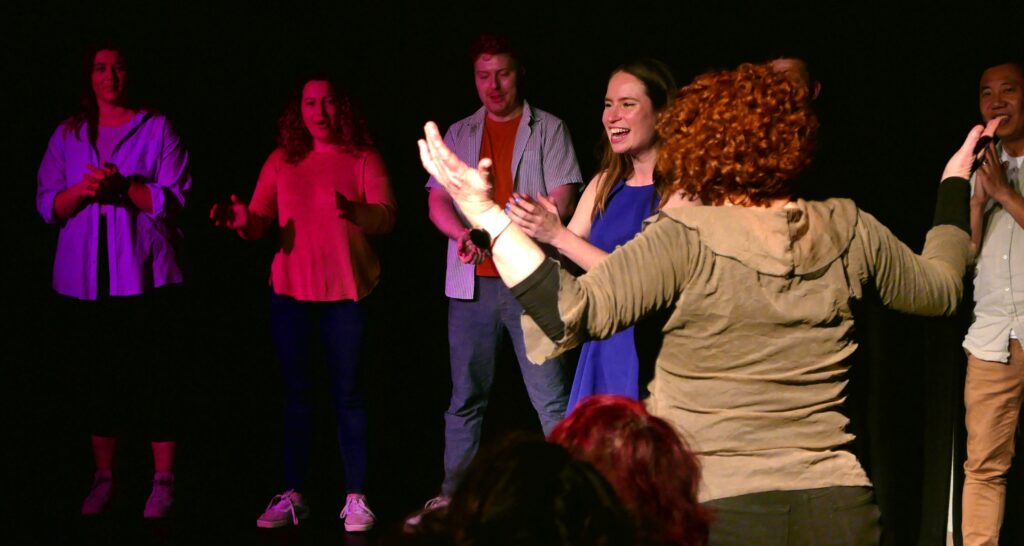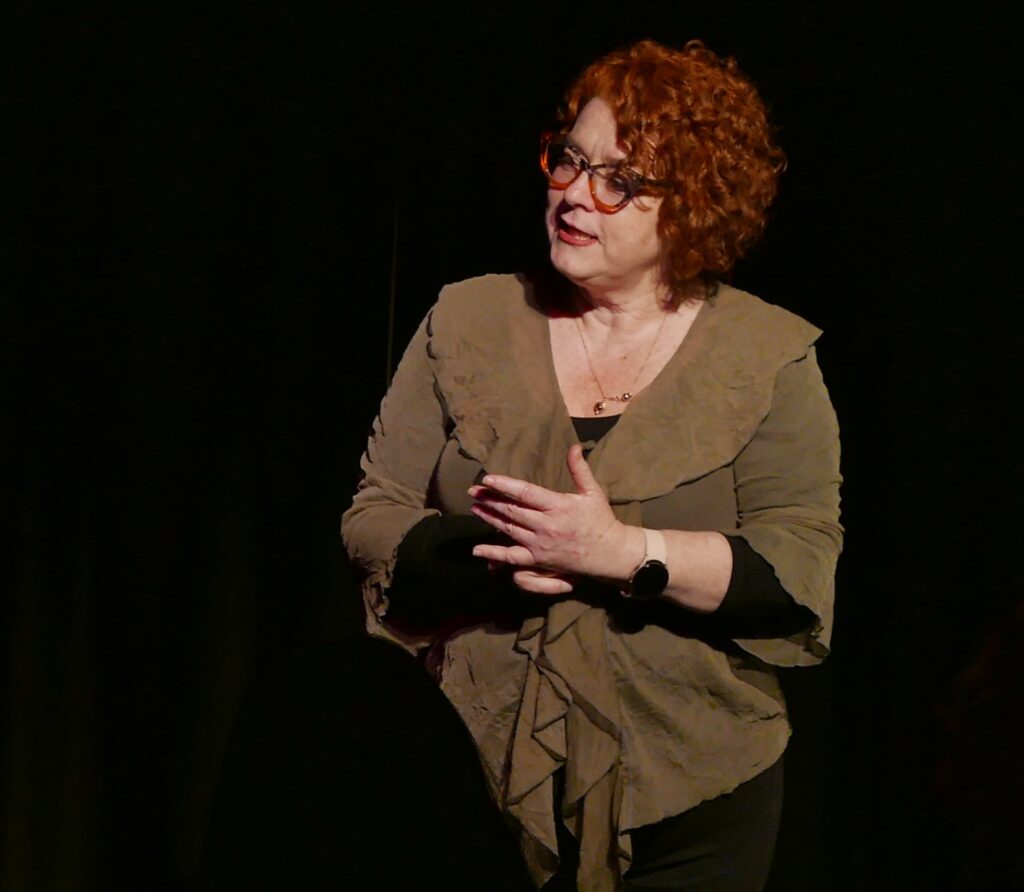Here are some of Jet’s pearls of wisdom from this morning:
– 3 elements to a scene – point of view, environment and partnering
– Mistakes as gifts – if you don’t know your name, that’s a gift – use it; if you speak at the same time as someone else, thats a gift, use it; mistakes can’t be faked, but they show the audience you are actually improvising
– Touch an object and really feel it, and find dialogue in that
– there’ s a safety zone on the stage (the one we’re working on today has a worn space about 2 feet in from the audience, and 2 feet from the back wall, around 4 feet wide) – stay out of it!!
– if they’re laughing before you have spoken, you are ahead – they do this from the physicality or the object you are holding, or the sound you make for this character
– people come to see us do stuff they would never do on stage (risk – I could never play a vagina), or stuff that can’t be done (flying, magic, etc)
– to make characters less cartoonish and more human take gestures smaller, closer to body or make it into an intermittent tic (don’t play with your hair or rub your nose all the time, just enough to establish this as a tic)
– after an opening or a group scene, the tao of improv says whoever is on stage are the people who are supposed to play the next scene
– do it because it looks like fun – be interested, not interesting
– have some abstract moments which may never be explained, or which may return later (e.g. a strange character doing something strange or inexplicable, being a virus or baying at the moon or whatever)
– you can tell by the laugh what’s going on – belly laughs vs reference laugh… emotional trumps clever
– it’s not a mistake if you keep doing it (it can be incorporated then) – 1 player plants the seeds, the other players water and grow it – no one brings their friends in to see their house’s foundation, but it makes everything else work
Jet calls exercise we did this morning the African Hunting Dogs because these dogs have a high success rate – 80% – because they hunt in packs. It accesses the 3 improvising skills which are most neglected. We often talk about writing and acting as improv skills, but there is also music, movement, and visual art. Stage pictures are important too!
Also did a lot of work on edits. Here is a list of many types of edits (of course there are as many as there are scenes):
– the sweep (good for a chaotic scene)
– swarm edit – everyone swarms on stage doing something (playing violins, dancing, writing things, rehearsing, catching a bus… usually something themic from the opening)
– object edit – walk confidently on stage without giving eye contact to the players, grab something they are using and transform it into something else. use stacking to make this into a character if you want to (this way the audience sees you are actually making this up, you didn’t come with it pre-written!)
– verbal edit – start talking from offstage in a way which indicates it’s a new scene (more crisp)
– touching the world edit – create a new environment – do something within that environment – if players can’t see you, it may help to make a sound to accompany this – creates quite emotional scenes
So that’s just the morning. Now to the afternoon class (so good, sooooo goood).




